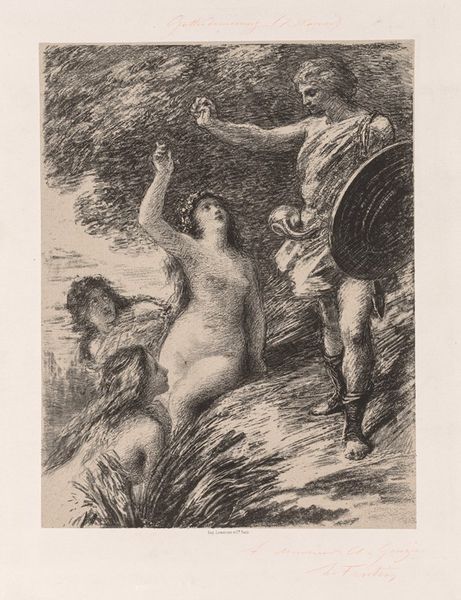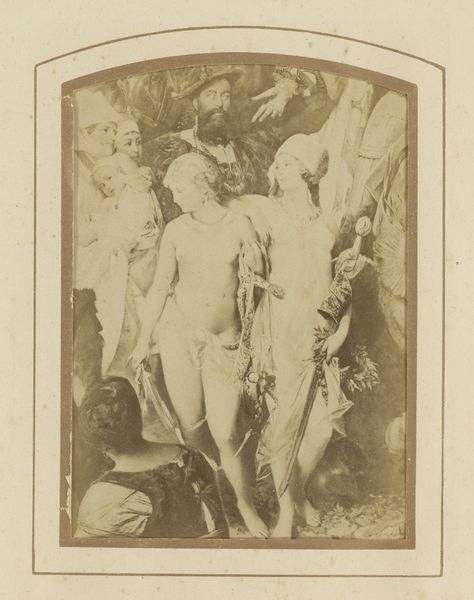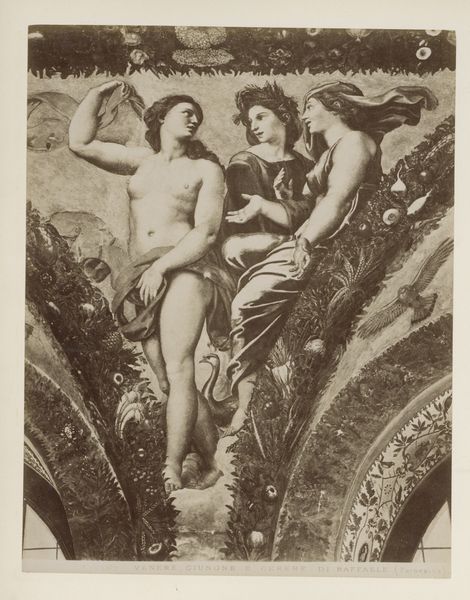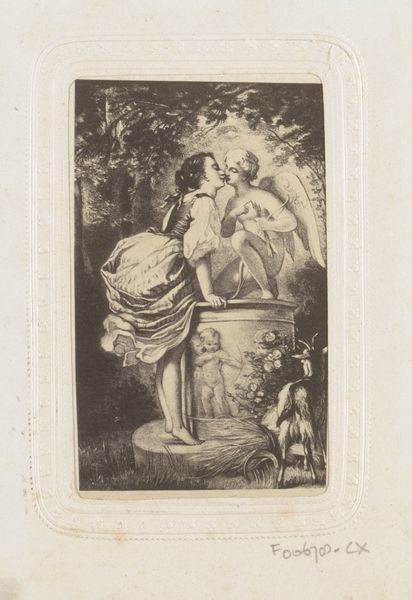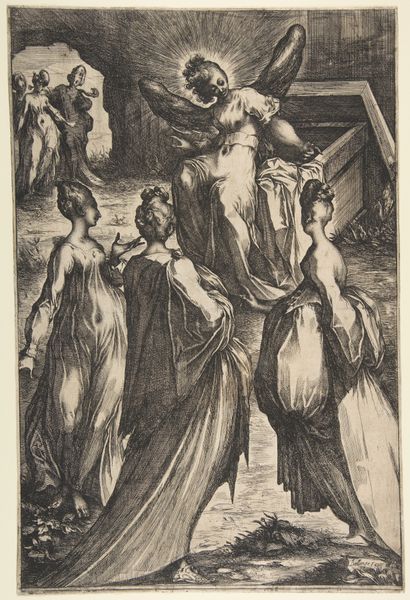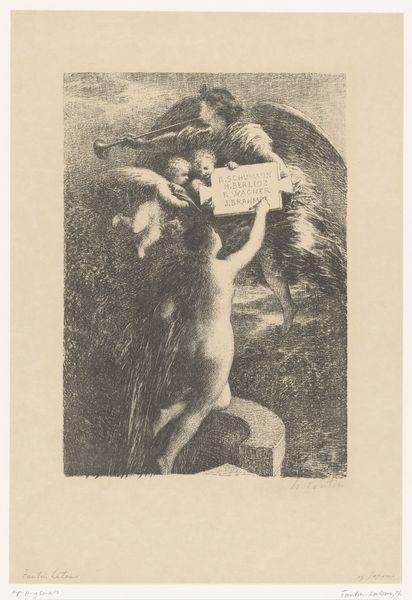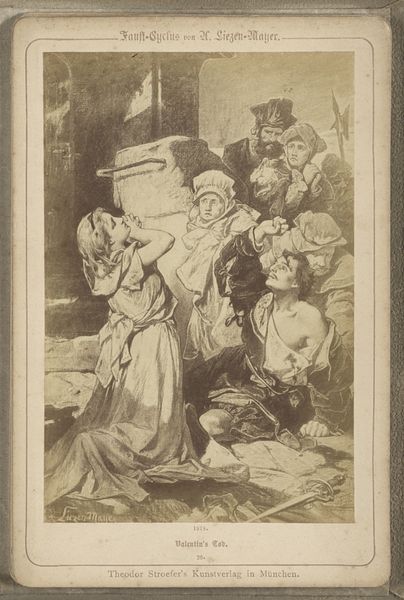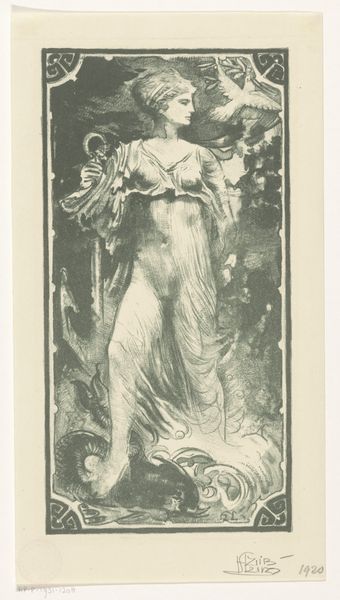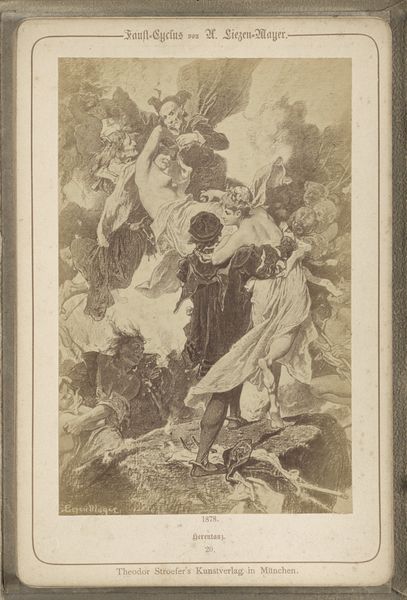
Fotoreproductie van een deel van een schilderij van de aankomst van Karel V in Antwerpen door Hans Makart c. 1878 - 1900
0:00
0:00
Dimensions: height 132 mm, width 94 mm
Copyright: Rijks Museum: Open Domain
Curator: This is a photographic reproduction of a portion of a painting, "The Arrival of Charles V in Antwerp," made by Hans Makart sometime between 1878 and 1900. The photo is an albumen print, giving it that distinct sepia tone. Editor: It definitely has that vintage, almost theatrical feel. The faces emerge from the faded background like players on a stage, the details slightly blurred by time. Curator: Indeed, and this blurring contributes to its iconographic power. It shows how the painting, already a grand historical narrative, gains another layer of meaning through its reproduction. It’s about the persistence of images. Editor: And about what parts of that historical narrative get preserved. Look at the two women at the front—one veiled, bearing flowers, and another seemingly bare-chested. The framing centers them. What power dynamics are at play here, celebrating Charles V’s arrival but highlighting these... questionable depictions of women? Curator: Right. This photo-reproduction, due to its format, may speak to popular desire for certain details. Flowers represent rebirth but here are maybe offered in subjugation; the figure without garments signals innocence and sensuality both, a common allegorical tradition rooted deep in the European psyche. Editor: Tradition? Or an artistic choice deeply entrenched in power structures of the 19th century that used images of women to legitimize hierarchies and male dominance? It feels as though we're viewing history, mediated by history itself and then reframed again. Curator: Precisely. This interplay of power, represented via archetypes and the way these translate and shift over time makes up the image's continued resonance. Editor: I agree; the photographic reproduction adds another complex dimension to how we read history. By isolating specific fragments, this photo emphasizes specific figures, gestures, and arguably, underscores the lasting social and ethical implications encoded in this moment. Curator: Thank you, I think focusing on what's shown gives even this "fragment" power to transcend historical context and touch deeper layers of societal values. Editor: Absolutely, it reminds me how even what feels like a static image remains incredibly dynamic, echoing different meanings with each era.
Comments
No comments
Be the first to comment and join the conversation on the ultimate creative platform.
